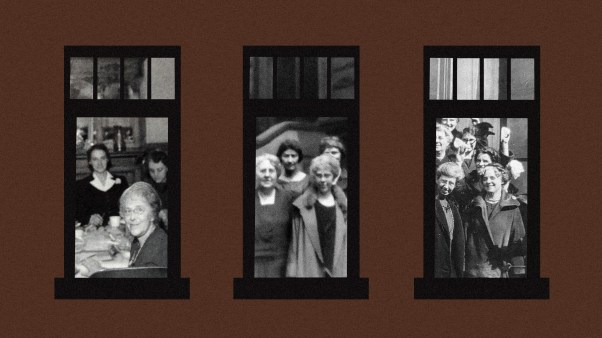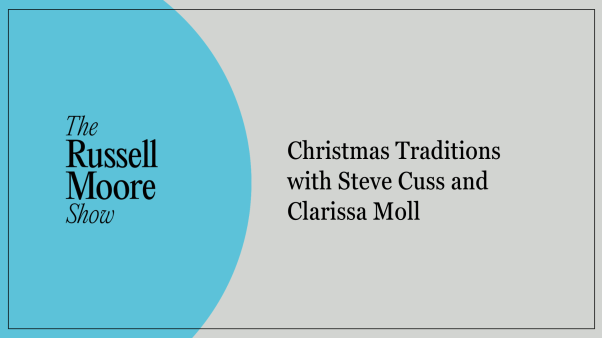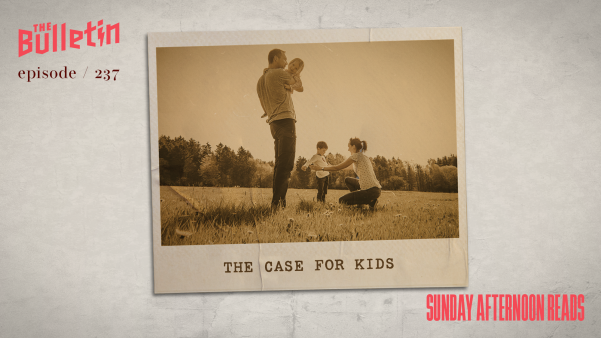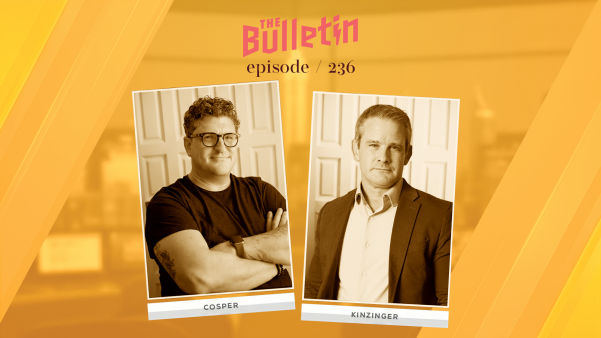The Making and Unmaking of an Evangelical Mind: The Case of Edward Carnell, by Rudolph Nelson (Cambridge, 252 pp.; $34.50, hardcover). Reviewed by Carl F. H. Henry, past editor of CHRISTIANITY TODAY and author of numerous books, including Twilight of a Great Civilization (Crossway).
More than 20 years have passed since the death of Edward John Carnell (1919–67), who for two decades acted as a leading spokesman for the then-emerging evangelical movement. I first met Carnell in the mid-1940s while we were both pursuing Boston-area doctoral studies and teaching at Gordon College. In 1947 I became one of the founding faculty members at Fuller Theological Seminary. Carnell, a welcomed friend, joined us the next year.
In 1955 he became president of Fuller for four frustrating years, after which, declaring himself an administrative misfit, he rejoined the faculty in 1959 as a confessed barbiturate addict seeking to combat deep depression and lifelong insomnia. He underwent extensive psychiatric counseling and perhaps as many as 50 electroshock treatments. His earlier teaching and writing skills began to evaporate. On April 14, 1967, when he was scheduled as one of three keynote speakers at a Catholic ecumenical workshop in northern California, he was found dead on the floor of his hotel room, the victim of an overdose of sleeping pills. The question of accident or suicide is still unanswered.
Nelson’s well-researched biography connects Carnell’s internal distress with numerous factors: a strict, legalistic pastor-father; depression; insomnia that haunted him from his youth; the specter of poverty as a student and young adult; the rejection of the first draft of his doctoral dissertation by one of his Harvard readers; the higher anxiety level of his chosen field of study with its demand for cognitive solutions; the internalization of the existential anxieties of a society in stress; and personal eccentricities.
But beyond all these factors, Nelson suggests that Carnell’s theological beliefs were the cause of his breakdown—a verdict akin to that of an overly imaginative Freudian analyst, and ventured in the face of significant data to the contrary.
Can Inerrancy Drive You Crazy?
Nelson makes much of “how deeply troubling it was” for Carnell to live with unresolved questions and doubts. He concludes that “the inerrancy issue” is the decisive key to Carnell and to the evangelical movement. He reviews the long debate over inerrancy by the Fuller faculty and then ventures to connect Carnell’s breakdown to “an anachronistic theology tied to an inerrant Bible” (p. 226). Yet no demonstrable proof is offered to confirm Nelson’s implication that Carnell took his life because he decided that his anti-inerrantist critics were right.
Carnell energetically taught and preached his orthodox beliefs during his graduate-student years, was ordained to the Baptist ministry, and instructed new members in the Westminster Catechism. He subsequently united with Park Street Church in Boston, a citadel of evangelical orthodoxy.
As did the 1947 founding faculty at Fuller, Carnell perceived the serious threat to evangelical orthodoxy posed by both modernism and neo-orthodoxy, and he dedicated his apologetic gifts not only to confrontation but also to providing an intellectually articulate alternative. In fact, at one point he felt that his award-winning book, An Introduction to Christian Apologetics (1948), had put to rout the foes of evangelical orthodoxy.
During his prepresidential years at Fuller, he authored several books: Television: Servant or Master? (1950); The Theology of Reinhold Niebuhr (1951), based on his Harvard dissertation and aiming to expose the raw nerve of neoorthodoxy; and The Philosophy of the Christian Religion (1952).
Ecumenical Tolerance
Carnell’s presidential term lasted four disenchanting years. His inaugural address on May 17, 1955, alienated some faculty colleagues and trustees by its avoidance of the term evangelical and of any reference to a trustworthy Bible and other central orthodox beliefs; instead of elaborating the seminary’s distinctive mission, he stressed ecumenical tolerance. A year into his job he sent a letter of resignation to Harold Ockenga, pleading exhaustion. But he followed that letter with another, this time to the trustees, retracting his resignation.
Socially ill at ease, he lacked a capacity for genuine dialogue, even with his own faculty. By December 1958, he conceded that he was a barbiturate addict. In May 1959, Ockenga announced Carnell’s resignation due to failing health. This coincided with publication of Carnell’s The Case for Orthodox Theology, in which he castigated fundamentalism, deplored Westminster founder John Gresham Machen’s ecclesiastical separatism, and scorched money-begging evangelists. In an essay in the Christian Century, he declared that “love, not possession of doctrine,” is the sign of true discipleship. The fundamentalist Right reacted furiously to what they saw as a tolerance of heresy. Mainline evangelicals also were critical, including Ockenga, who apparently had earlier approved the manuscript.
By late 1960 Carnell showed clear signs of psychological breakdown. He submitted to repeated electroshock treatments, but he could not escape barbituric dependence. Victimized by heavy sedation and accompanying memory loss, his classroom presence was marked by concentration on personal problems, academic ineffectiveness, and dwindling student interest.
Nelson speaks of “poignant and penetrating evidence of what an immense and crippling burden it was for Edward Carnell to carry around the doctrine of biblical inerrancy.” But the judgment is gratuitous, just as is the comment that Carnell’s doubts at times eroded his sense of integrity.
In 1962 Carnell participated with others in a theological dialogue with Karl Barth in Chicago. When asking Barth how he harmonized his appeal to Scripture as the objective Word of God with his view that Scripture is sullied by theological, historical, and factual error, Carnell made the offhand comment that he too faced this problem. His apparently wavering affirmation of biblical inerrancy sparked evangelical criticism. Yet later in Fuller Seminary chapel, he reaffirmed his belief in inerrancy and indicated that he considered Barth’s reply unsatisfactory.
When the inerrancy issue first exploded at Fuller Seminary in December 1962, Carnell challenged the vacillation of the newly appointed dean and insisted that “evangelical Christianity should not jettison the doctrine of inerrancy.” At the time of his death, some five years later, Carnell was at work on a book on the Bible. In his introduction he declared that the view of “Biblical inerrancy, … in my finite judgment, is correct.”
If we inquire about Nelson’s preferred alternative, we are left pretty much with a bag of wind, for he offers no real dialogue with evangelical orthodoxy about a preferred statement of Christian theism. To his dying day, Carnell would have fought the imaginative proposals that Nelson postulates. Many quotations Nelson cites by way of implicit criticism of Carnell’s positions are akin to those that Carnell would have wrestled and pinned to the mat.
Clergy Capers
Mysterium and Mystery: The Clerical Crime Novel, by William Spencer (University Microfilms International Research Press, 333 pp.; $44.95, hardcover). Reviewed by J. I. Packer, a senior editor for CHRISTIANITY TODAY, and professor of systematic and historical theology at Regent College, Vancouver, British Columbia, Canada.
Popular fiction focuses the fantasies and fears of the society that consumes it, and for over a century we have been fascinated by the stories of detectives. By inferring from enigmatic data who committed the crimes and how, these puzzle solvers clear the innocent and bring the wrongdoers to justice. What does this say about Western society?
Judeo-Christian patterns in these stories are unmistakable. They depict human life as exposed to evil, and justice and happiness as flowing from the labors of a savior-hero. Even the modern, antiheroic saviors, with vulnerabilities highlighted and all slips showing, still dispense justice and happiness, which is what detective stories were, are, and always will be really about. So these tales plug into a God-taught longing for shalom, and the fictional detective is a sort of Christ figure; and our society, which declines to endorse Christian truth, still feels the pull of shadow outlines of Christian salvation.
Spencer’s book surveys stories in which the detectives are official Christian or Jewish functionaries. A self-conscious evangelical, the author tends to treat all these tales as message literature—lessons or tracts in disguise-featuring detectives who are also didactic symbols. This is true of some (Father Brown and Rabbi Small, take your bow), but most detective tales seem to be simply the work of writers using backgrounds they know to construct stories that entertain and so make money for them to live on. Spencer may take some of his material a bit too seriously.
However, most writers who use Christian backgrounds are Christians themselves, so naturally their stories reflect a Christian outlook, and thus conserve Christian values for our drifting society. Spencer does well to stress this.
His 160,000 words exhaustively survey a catalog of over 100 full-length novels and more than 50 short stories. Some may judge that he has majored in minors, but aficionados will disagree. Spencer is a fine critic: He sees what he is looking at and helps us to see it also (which is what literary criticism of this kind is for). He pinpoints the goodness and analyzes the appeal of these particular good dreams most cogently. I am grateful, and I think others will be too.
Science Held Hostage: What’s Wrong with Creation Science and Evolutionism, by Howard J. Van Till, Davis A. Young, and Clarence Menninga (InterVarsity Press, 178 pp.; $7.95, paper). Reviewed by Bill Durbin, Jr., a free-lance writer specializing in issues of science and religion.
A dvocates of both creation science and evolutionism frequently misuse science by bending it to fit their agenda. This controversial thesis is advocated by Howard Van Till, professor of physics and astronomy, and Davis Young and Clarence Menninga, both professors of geology. All teach at Calvin College in Michigan, and all are evangelical Christians actively involved in the American Scientific Affiliation.
In Science Held Hostage, the three seek to dispel the notion that science and religion are in conflict. Instead, “the two are not enemies but partners in the quest for understanding ourselves and our world.” To maintain this “amicable working relationship,” the authors aim to show how the integrity of the “professional scientific enterprise” and the boundaries of its limited understanding of the world are violated by proponents of both “scientific creationism” and “evolutionary naturalism.”
In so doing, the authors pull no punches. They remain here, as elsewhere, forthright and aggressive in defending both the limits and the integrity of science.
But what is “science,” and how might it be “held hostage”? Aren’t all scientific theories subject to philosophical or religious commitments that influence their formulation, evaluation, and propagation? Answers to these questions provide the philosophical groundwork for this short, hard-hitting book intended for educators and laypeople alike. Van Till’s stamp is evident in the initial pages, elucidating the difference between properly scientific questions about the physical world on the one hand, and religious questions dealing with the meaning, purpose, and value of that world on the other.
A Community Of Scientists
Throughout the book, the authors stress the existence of “a community of professional scientists” whose practice over the years has given rise to generally accepted ways of deciding what is a valid scientific theory and what is not. The natural scientist has the means of keeping religious questions clear from purely scientific ones.
Based on these criteria, and drawing on their own particular expertise, the authors examine four case studies from the creation/evolution debate: the shrinking sun, the depth of dust on the moon, salt levels in the oceans, and “supposed” missing layers of rock in the Grand Canyon. In each case, the writers labor carefully to show that the standards of science are consistently violated by investigators with a prior commitment to “scientific creationism.”
Equally contentious, yet less scientifically specific examples of “naturalist” ideology also come up for criticism. The writings of popularizers such as Isaac Asimov and Carl Sagan are scrutinized and exposed for their illegitimate efforts either to deny religious belief or to promote their own, in the name of science. “Carl Sagan’s Cosmos begins with an overly naturalistic statement,” the authors tell us. “ ‘The cosmos is all that is or ever was or ever will be.’ One wonders how Sagan can know that.”
In general, creation scientists are criticized for failing to meet generally accepted standards of scientific practice, while evolutionary naturalists are convicted for overstepping the bounds of authentic science. Both are accused of “folk-science”—using knowlege about the physical world to justify pre-existing religious or ideological world views.
The authors admit that the revelations of science and of religion combine to form an individual’s full understanding of existence, a “single coherent world view.” But in this volume they are intent on distinguishing those two components, and, by implication, identifying the proper working relationship between them. Scientists, constrained by their methods and standards, step beyond their bounds when seeking to justify a particular view of existence gained only by other means. Confined to its proper domain, science is set free and judged on its own terms.
Do not expect here a resolution of the difficult questions involved in reconciling Genesis with biological evolution; but do expect a provocative and useful guide for evaluating how and when science might masquerade as religion, and vice-versa.
For an additional Christian perspective on these issues, the reader may benefit from a book by Calvin College professor of philosophy Del Ratsch entitled Philosophy of Science: The Natural Sciences in Christian Perspective (InterVarsity Press, 1986). Among other things, Ratsch analyzes Van Till’s attempts to clearly distinguish domains of religious faith from those of scientific interpretation.










